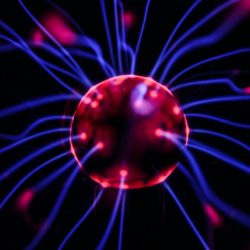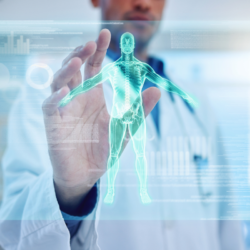The ketogenic diet is often cited for its effects on weight loss and metabolic health. But do you really know how ketosis works and why it plays a key role in this type of diet?
Ketosis is a natural physiological process that is triggered when the body no longer receives enough carbohydrates and begins to draw its energy from fats. When properly managed, this mechanism can have positive effects on weight management, diabetes regulation, the reduction of chronic inflammation and even brain function.
How does the body enter ketosis and what are the implications of this metabolic change for health?
A little history
The ketogenic diet was initially developed in the 1920s as a medical treatment for epilepsy. Researchers discovered that a very low carbohydrate intake could significantly reduce the frequency of seizures.
In the 1970s, Harvard researcher Dr Blackburn took ketosis further and highlighted its potential for weight management. Since then, a great deal of research has been carried out to explore its applications, particularly in neurology, endocrinology and metabolism.
How does your body react to cutting out carbohydrates?
| Phase | Mechanism | Effects on the body |
|---|---|---|
| 0 to 12 hours | Use of glycogen reserves (liver and muscles) | Drop in insulin, start of energy transition |
| 12 to 24 hours | Neoglucogenesis: production of glucose from muscle amino acids | Brain and heart still predominantly use glucose |
| After 36 hours | Activation of lipolysis: breakdown of triglycerides to produce ketone bodies | Entry into ketosis: – 10% of lipids converted into glucose – 90% ketone bodies (new fuel for the brain and muscles) |
According to a 2025 study published in Diabetes, Obesity & Metabolism, ketogenic diets are generally safe, but require medical monitoring in certain at-risk populations.
Ketones: what are their effects on energy and the brain?
Ketones have two extraordinary benefits for a person following a ketosis weight loss programme:
- An appetite suppressant or anorexogenic effect
- A “booster” effect, particularly on the brain (psychotonic)
If there is no normal protein intake, at that point, after a few days, the muscle will melt significantly to produce sugar.
The advantage of protein intake is that it supplies the liver directly with sufficient protein, thereby sparing muscle mass. Ketosis without protein intake means losing lean body mass as well as fat mass.
With a sufficient protein intake, you lose fat mass while sparing your muscle mass without feeling hungry.
Ketogenic diet: What are the benefits and precautions to be taken?
The scientifically observed benefits of the ketogenic diet:
- Epilepsy: used since the 1920s as a treatment to reduce seizures.
- Weight loss: promotes fat burning and reduces cravings.
- Glucose regulation: improves insulin sensitivity and may be beneficial for people with type 2 diabetes.
- Reduction in inflammatory markers: some researchers suggest an anti-inflammatory effect beneficial for chronic diseases.
However, it is advisable to follow this diet under medical supervision, particularly in cases of pre-existing pathology.
Food supplements
Solaray Raspberry Ketones 100 mg is a dietary supplement formulated from raspberry ketones, compounds naturally present in the fruit and known for their role in fat metabolism.
This supplement forms part of a ketogenic diet by supporting lipolysis, a process which promotes the breakdown of stored fat. It is often used to support weight loss and help regulate appetite.
Each capsule contains 100 mg of raspberry ketones. We recommend taking two capsules a day with a glass of water, as part of a balanced diet and healthy lifestyle.
Contraindications of the ketogenic diet
However, as with all diets, there are a few precautions to take into account. It is therefore contraindicated to start a ketogenic diet in the event of :
- Conditions that increase protein catabolism
- Progressive heart disease
- Diabetes
- Renal or hepatic insufficiency
- Psychological disorders
- Pregnancy or breast-feeding
- Children, adolescents or people over 70 years of age (due to hyper-catabolism)
- Medium-term life-threatening condition
- Allergies to milk or egg proteins
In all cases, never start a ketogenic diet on your own! This dietary programme should be decided in consultation with your doctor, naturopath or dietician, and should be established under medical supervision.
Are there any side effects?
There are indeed side-effects, but these are signs that the ketogenic diet is going well and are therefore normal.
- Bad breath due to the presence of ketone bodies
- Headaches, which may occur in 10% of subjects during the first 10 days of the diet
- Menstrual disturbances, which occur at the start of the fast because of the links between oestrogen and fatty tissue. This is a good sign, as it is a process of hormonal resynchronisation.
- Constipation means that the intestines lack fibre. It is advisable to take a course of probiotics at the same time as the ketogenic diet in order to reduce the discomfort caused.
- Orthostatic hypotension (nocturnal cramp) is explained by a reduction in intravascular volume (volume of blood circulating in the veins) caused by a lack of sodium. In this case, sodium intake must be adjusted.
- Muscle weakness. In this case, simply adjust the potassium intake.
Some testimonials
“I’ve been on the ketogenic diet for 4 months now and I’m not at all frustrated. What’s more, I’m losing weight at a steady rate: in four months I’ve gone from 72 to 64 kg, and I’m losing about 500 grams a week Pascale
“Before, I’d tried eating nothing but pasta, high-protein diets and so on. All sorts of things that didn’t work at all. Since I started the ketogenic diet, I’ve lost 12 kilos. When I started, I was 88kg for 1m76 Nadine
“When I went into ketogenic mode, everything was much better in every way: less appetite, no cravings for sugar, fewer frustrations, better skin, more beautiful and resistant hair, better morale and physique, better concentration, inner calm… All positive things!” Isabelle
“My husband and I lost 10 kg without any problems, without deprivation and with a lot of pleasure Odile
Sources
- Roberts, C. G. P., & Athinarayanan, S. J. (2025). Illnesses associated with ketosis including diabetic ketoacidosis during very low carbohydrate and ketogenic diets. Diabetes, Obesity & Metabolism.
- Pulido-Correa, V. E., Hernandez, A., Wind, E. J., Zhu, Y. Y., & al. (2025). Ketogenic Diet Enhances Cognitive-Behavioral Function and Hippocampal Neurogenesis While Attenuating Amyloid Pathology in Tg-SwDI Mice. bioRxiv.
- Kȩdzierski, J., van Diest, R. E., Allard, J. A., Odermatt, A., & al. (2025). Discovery of Non-Steroidal Aldo-Keto Reductase 1D1 Inhibitors through Automated Screening and In Vitro Evaluation. Toxicology Letters, Elsevier.
- Fastiggi, V. A., Mank, M. M., & Poynter, M. E. (2025). Beta-Hydroxybutyrate Attenuates Bronchial Smooth Muscle Pro-Inflammatory Cytokine Production. bioRxiv.
- Ugwu, D., & Palacios, A. M. (2025). Unlocking the Power of Ketogenic Diets: Evidence-Based Insights into Weight Loss, Diabetes, and Beyond. Georgia Southern University.





